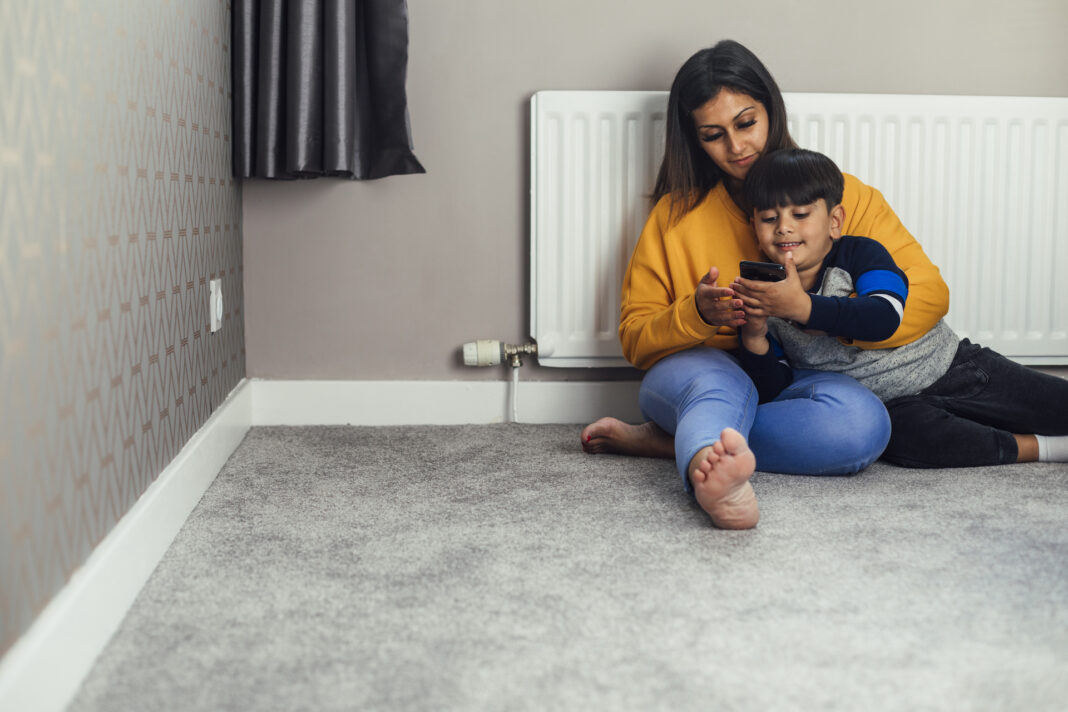
Many houses and apartments use radiators to heat your space instead of central heating systems. On occasion you may need to turn your radiator off to cool the area down, check for a leak, or do other routine maintenance on the system. Knowing how to turn your radiator off properly beforehand can speed up the process and prevent radiator-related incidents.
What is a radiator?
A radiator is a heating system that uses steam from the water in the system’s pipes to heat a space. The system heats up water in a central tank, called a boiler, and pushes the water through pipes to each individual radiator in the system. Then, using convection, the radiator dispels heat from the hot water turning to steam into the air.
There are two types of radiators:
- One-pipe systems: Steam flows directly from the boiler to each radiator, and once the steam condenses, it flows back to the boiler through the same pipe.
- Two-pipe systems: Steam flows from the boiler to each radiator via an inlet pipe, and once the steam condenses it goes back to the boiler through a second pipe, an outlet pipe.
In many older homes and apartments with radiator systems, there is a radiator in each room of the house, including bathrooms, to heat each individual space. Some even have thermostatic valves, secondary nozzles that allow you to control and customize how warm each room of the house is. These nozzles are more common on two-pipe systems but can be found on one-pipe systems.
Why do some apartments and houses use radiators?
You can find radiators in states that have really cold winters because these heating systems can be an effective way to heat up a space and even customize the temperature in various rooms. In these areas, you’ll find many skilled and experienced professionals and landlords who know how to maintain such radiator systems because they’re so common.
You’ll also find that older apartments and houses that were built many decades ago, including those built in the 1800s or earlier, may have radiators instead of central heating systems, which were invented after these older buildings were constructed. Many of these older buildings are also located in northern states that experience cold winters.
If the apartment or house that you rent has radiators, it was likely built before central heating was popular. The building’s owner may have chosen to keep the radiator system to preserve the historical integrity of the building and/or to avoid paying the high cost of tearing out the system and replacing it with a new one, especially if the radiator system was in good working condition.
How do you turn off a radiator?
Maybe you live on the top floor and, since heat rises, your apartment is super hot. Maybe your utility costs are getting a bit too high. Or, maybe the cold season is over and you’re ready to cool off. Turn off your radiator using these easy steps:
- Find the thermostatic valve and turn it to 0. Typically, this nozzle is located on the side of the radiator near the floor. However, you may also find it on the top left side. Turning this nozzle to 0 stops the steam from entering the radiator and heating the room. If your radiator doesn’t have this valve, you can go to the next step.
- Find the second valve and turn it clockwise until it doesn’t turn anymore. This second nozzle is the off/on switch for the radiator itself. However, if your radiator did not have a thermostatic valve, this is the only valve you will see.
- Remove the lockshield valve cap. In addition to the first two steps, or in place of them, find the on/off valve. Check to see if there is a screw on top of the plastic cap. If there is, find a matching screwdriver, either Phillips head or flathead. Then, remove the screw and the cap from the valve and store them together until you need to replace them and turn the radiator back on. If there is no screw, stick with steps one and two instead.
It’s important to note that, if your radiator has been running, it may take a while — even up to an hour — to cool down. During this time, the space may still feel warm and the radiator itself may still be hot.
When should you call your landlord?
In most cases, you can turn off your radiator yourself. But there are some situations in which you may need your landlord’s help. Here are some reasons you might want to call your landlord regarding your radiator:
- You have your radiator turned on but it’s not giving off heat, which may mean the landlord needs to bleed it, releasing built-up air inside the system
- You spot a puddle under one of your radiators, which could indicate a leak
- You hear banging or whistling, which could mean your landlord needs to bleed the system
- You’ve turned off your radiators but your apartment is still too hot, which may require your landlord to turn down the water heat
You or your landlord might call in the heating and cooling professionals to handle the radiator in situations like these:
- Your radiator is on but it’s not giving off heat and your landlord can’t fix it themselves
- There’s a major leak in the system but the landlord can’t find it
- A radiator or the whole system needs to be replaced
Radiators can be a great heating system, so much so that you may not miss newer central heating systems. But to keep it in the best working order possible, you should know how to turn it on and off safely and properly so you get the most out of your heating system.



